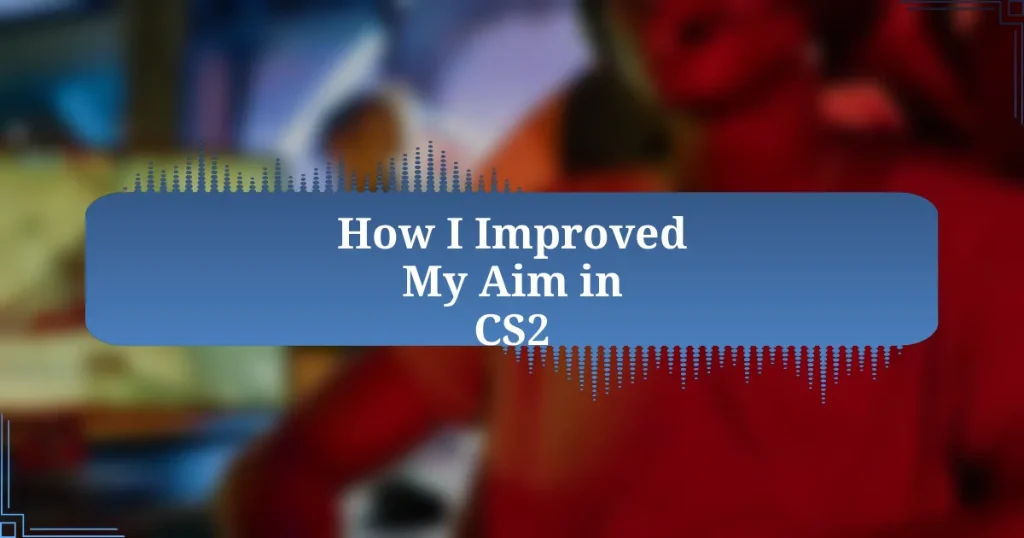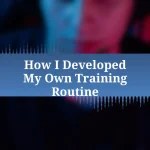Key takeaways:
- Counter-Strike 2 revitalizes the franchise with enhanced graphics, new maps, and refined mechanics, appealing to both new players and veterans.
- Aiming skills are crucial for success, with techniques such as crosshair placement, burst firing, and tracking significantly impacting performance.
- Consistent practice using aim trainers, warm-up routines, and analyzing gameplay replays fosters improvement and builds muscle memory.
- Tracking progress through performance metrics and setting specific goals promotes motivation and reveals patterns for focused training.
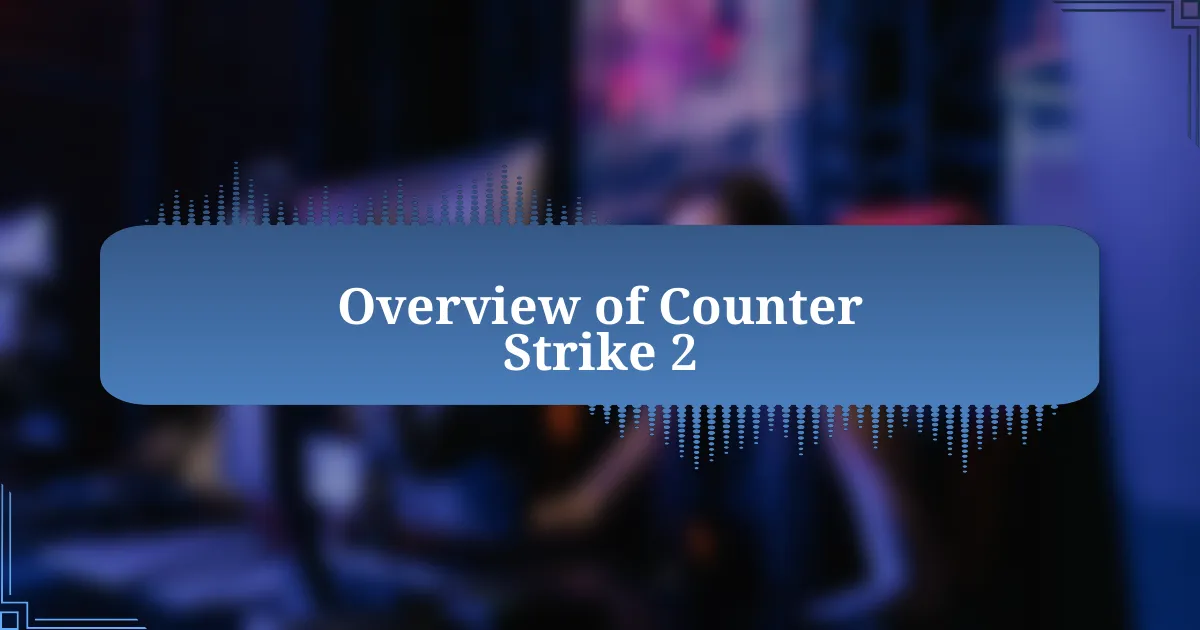
Overview of Counter Strike 2
Counter-Strike 2 has raised the bar for competitive first-person shooters. With its revamped graphics and improved mechanics, it has breathed new life into the series that many of us have loved for years. Does anyone else feel that rush of adrenaline when you clutch a round, pulling off a headshot just as the timer runs out?
The game introduces new maps and updated weapon handling, which makes every match feel fresh and innovative. I remember the first time I played on the new Mirage; the vibrant graphics completely immersed me, and I felt a sense of nostalgia blended with excitement. It’s fascinating how each element in CS2 is designed with both new players and veterans in mind, creating a broader appeal.
What I truly appreciate about CS2 is its commitment to maintaining the essence of the original game, while also embracing modern advancements. Have you ever stopped to think how pivotal that balance is for long-time fans like us? I’ve experienced the beauty of teamwork and strategy countless times, and each round offers a new lesson.
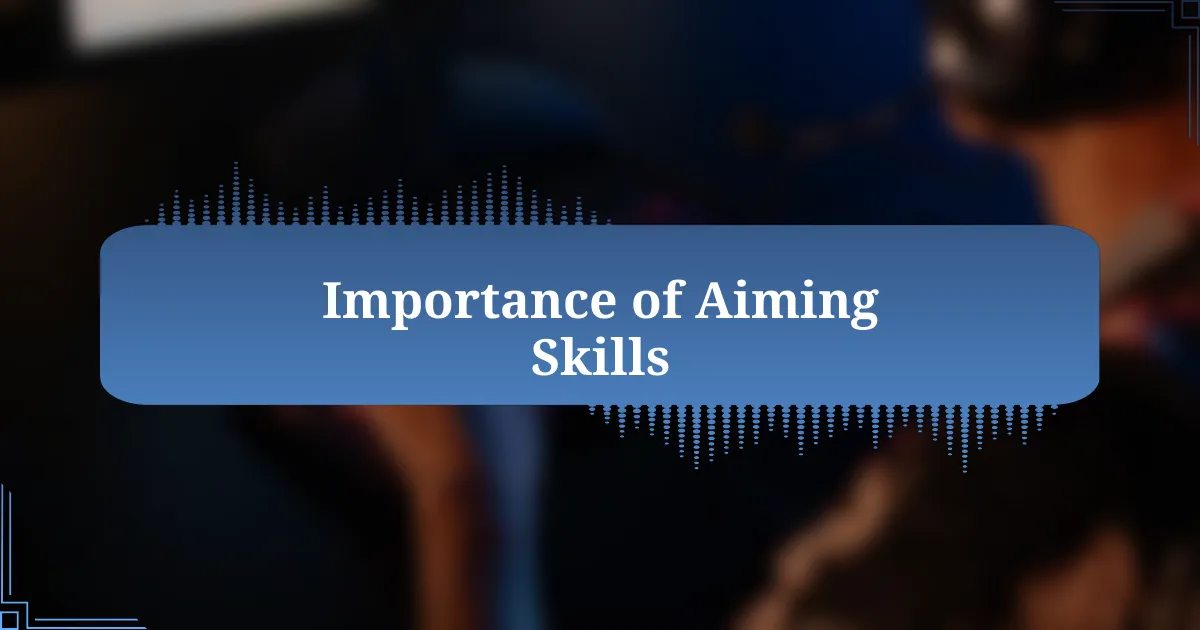
Importance of Aiming Skills
Aiming skills are the backbone of success in Counter-Strike 2. Think about that moment when you line up a perfect headshot; it’s all about precision and timing. I’ve found that even a slight adjustment in aim can be the difference between victory and that frustrating defeat, like when you’re seconds away from winning but miss a crucial shot because your crosshair wasn’t quite right.
When I first got serious about honing my aim, I was surprised by how much my overall gameplay improved. I went from being an average player to consistently ranking higher, simply because I nailed my shots more often. It’s not just about shooting; it’s about confidence too. Have you ever felt that exhilarating rush when everything clicks, and you’re landing shot after shot? That’s a feeling I chase every time I play.
Moreover, mastering aiming skills fosters a deeper understanding of in-game mechanics. For example, learning spray patterns has not only improved my aim but has also helped me anticipate opponents’ movements. It’s fascinating how these skills interrelate and enhance your overall gameplay. I remember the satisfaction of finally mastering the AK-47 spray in CS:GO and feeling that same thrill translate into CS2—it made all the hours spent practicing worthwhile.
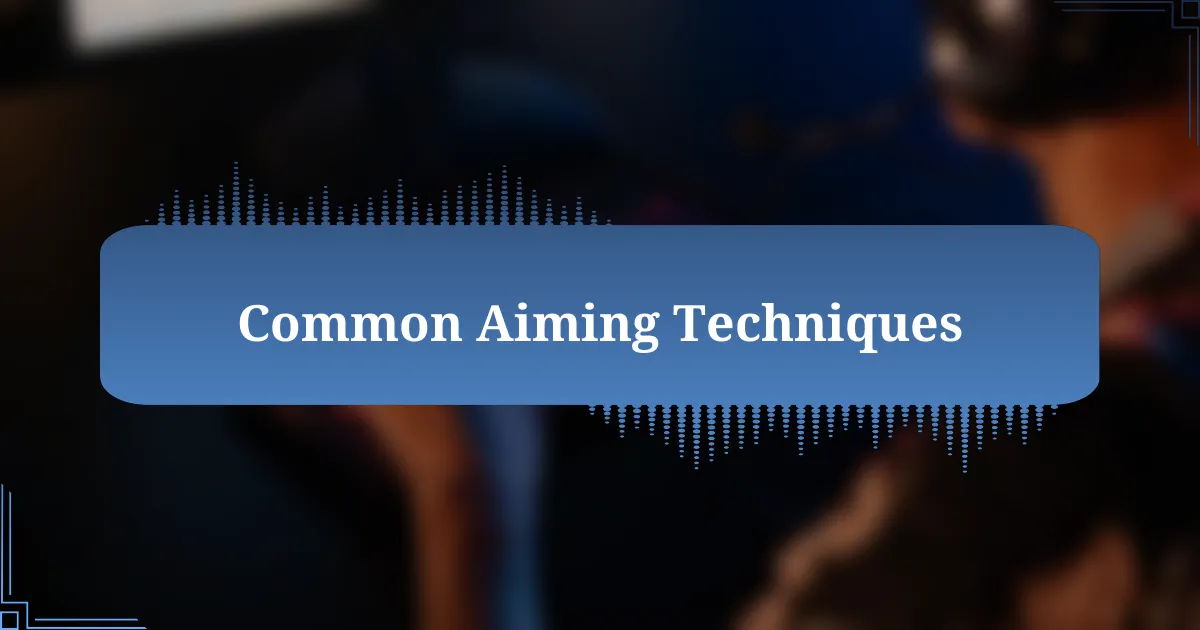
Common Aiming Techniques
Understanding common aiming techniques can dramatically enhance your gameplay in Counter-Strike 2. One approach that I found to be incredibly effective is the “crosshair placement” technique. This involves positioning your crosshair at head level, anticipating enemy movements as you navigate through maps. It’s amazing how adopting this simple habit reduced my reaction time and allowed me to secure critical shots—there’s a distinct thrill when you catch opponents off guard!
Another useful technique is the practice of “burst firing.” Instead of holding down the trigger for continuous fire, I learned to fire in short bursts, which helped maintain accuracy, especially at longer distances. I vividly remember my first time using this technique during a tense gunfight, where I was up against multiple targets. By controlling my shots and avoiding wild sprays, I managed to turn the tide in my favor, making me feel like I had truly taken charge of the situation. Isn’t it satisfying when you can outsmart your opponents with precision?
Lastly, don’t underestimate the power of “tracking.” This method involves smoothly following your target’s movements, which requires a mix of practice and patience. Early on, I struggled with this technique, often losing sight of my target in heated encounters. Yet, as I dedicated time to practicing my tracking skills, I found it became second nature. Can you recall a moment when you felt like you were dancing with your crosshair, predicting every move of your opponent? That’s the magic of mastering aiming techniques—it makes every game feel like an exhilarating challenge.
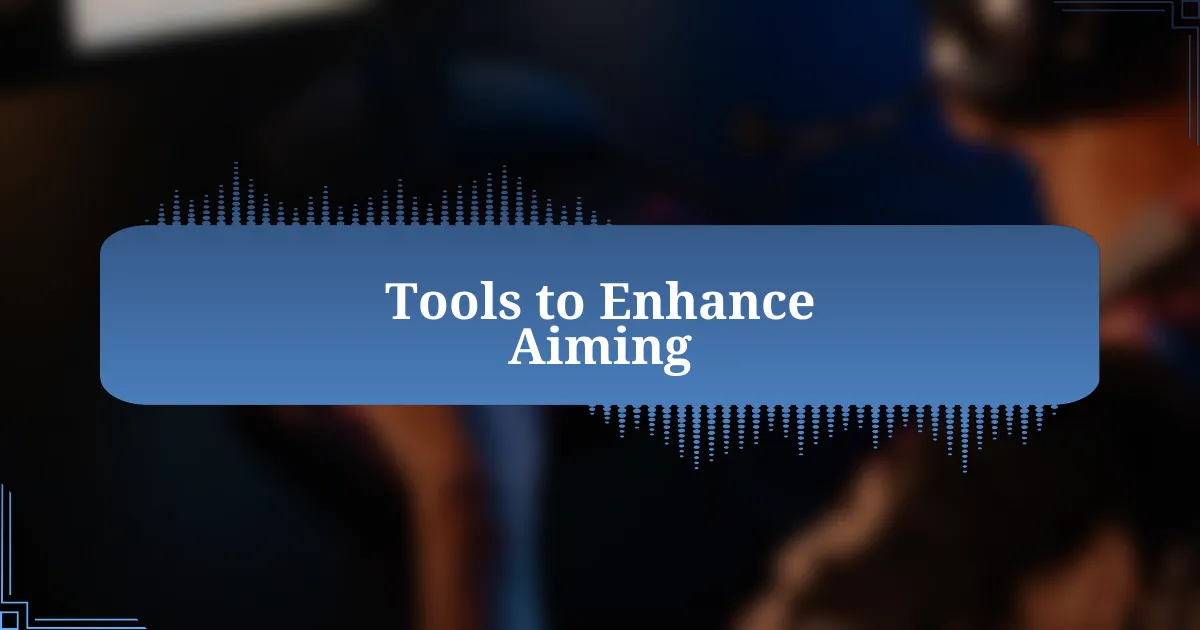
Tools to Enhance Aiming
When it comes to enhancing my aim in CS2, the right tools can make a world of difference. For instance, I swear by the use of aim trainers like Aim Lab or Kovaak’s. These platforms offer tailored drills that helped me focus on specific skills like flick shots and tracking. I remember feeling a sense of accomplishment each time my scores improved—it’s incredibly motivating to see tangible progress.
Another aspect I’ve found essential is customizing my settings within the game itself. Adjusting sensitivity levels and crosshair styles to suit my personal playstyle transformed my overall performance. There was a moment during a competitive match when I suddenly realized that my crosshair was aligning perfectly with my shots. It felt like everything clicked into place; my confidence soared as I fought my way through rounds.
Moreover, I can’t overlook the value of practice maps. These community-created environments are perfect for honing my skills without the pressure of a live match. I still recall spending hours on a training map, slowly but surely watching my accuracy increase. Have you ever felt that rush of adrenaline when you nail a particularly challenging target after countless attempts? It’s a testament to how the right tools can enrich your gaming experience!

My Personal Aiming Challenges
There was a time when I struggled with my aim, especially during high-pressure situations. I would often miss shots that seemed so easy in practice, leaving me frustrated and questioning my skills. It was disheartening to know that I had spent countless hours working on my aim yet still felt like I was falling short in crucial moments.
One of the biggest personal challenges I faced was overcoming my shaky hands during tense encounters. I remember a particular match where I had a perfect opportunity to clutch a round. My heart was racing, my hands felt clammy, and I panicked, leading to a series of missed shots. It’s moments like that which made me realize the importance of mental composure in addition to mechanical skills.
Additionally, I found that consistency was another hurdle for me. There were days when everything felt right, and I could hit targets easily, while on other days, my shots would go astray. Have you ever experienced that? It made me question whether I was truly improving. I learned that it wasn’t just about practicing hard but about practicing smart—focusing on building habits that would lead to long-term improvement rather than just fleeting success in individual games.
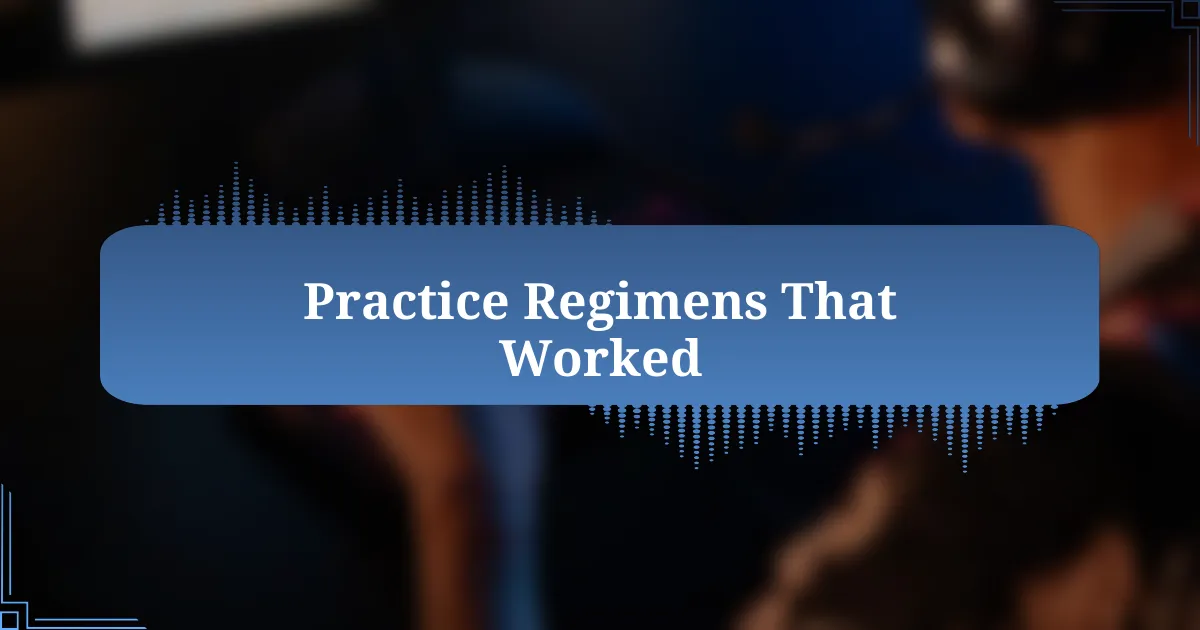
Practice Regimens That Worked
One effective practice regimen for me was the use of aim trainers—specifically, I dedicated about 30 minutes each day to programs that focused solely on flick shots and precision. Initially, I thought it was just another gimmick, but after consistent use, I noticed how these sessions helped me develop muscle memory. It’s fascinating how quickly the mind and body can adapt if you’re willing to put in the effort.
Another approach that proved valuable was incorporating warm-up routines before I jumped into competitive play. I would spend 15 minutes in a deathmatch to hone my reflexes and get over the jitters. There were times when I skipped this warm-up, thinking it was unnecessary, only to find myself struggling to hit targets in my first few rounds. Have you ever started a game without warming up and felt completely off?
Lastly, I took the time to analyze my own gameplay through replays, focusing on moments where I missed shots. I would pause the video at key moments to study my crosshair placement and decision-making. It was eye-opening to see how small miscalculations could lead to frustrating outcomes. This reflective practice, rather than mindlessly playing match after match, helped me identify areas for improvement and approach my training with purpose.
![]()
Progress Tracking and Reflection
Tracking my progress has been key in my improvement journey, allowing me to see how far I’ve come. For example, I started keeping a journal where I recorded my daily performance metrics, like headshot percentage and accuracy. Reflecting on these numbers not only motivated me but also highlighted patterns in my gameplay I hadn’t noticed before. Have you ever looked back at your stats and realized how your hard work has paid off?
I also set specific goals for myself, like aiming for a particular accuracy rate by the end of each week. Checking in on these goals made it easier to stay focused and committed. I remember one week where I fell short of my targets; instead of getting discouraged, I took the opportunity to reflect on what went wrong. In doing so, I learned that missing a target sometimes revealed deeper issues in my approach to the game. Did you ever stop to analyze a setback and find unexpected lessons within it?
Furthermore, sharing my progress with friends helped create a support system. We would discuss our wins and losses, celebrating improvements and tackling frustrations together. This camaraderie not only kept me accountable but also provided new perspectives on my reflection process. I often found the best insights came from conversations with others; who knew that a simple chat could uncover ideas for refining your aim?











